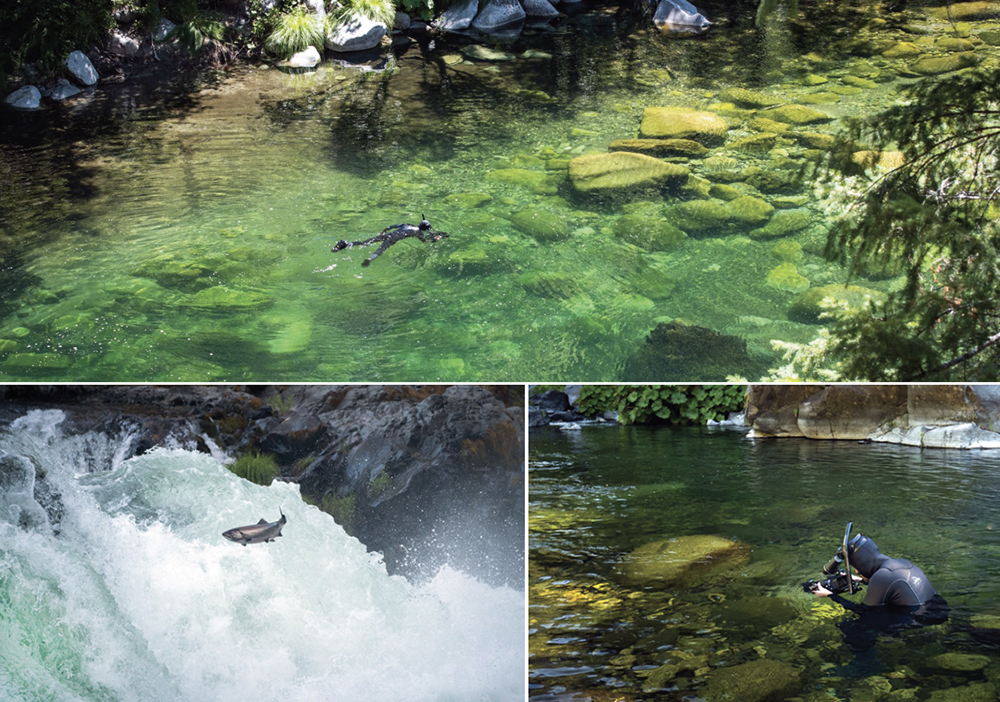
A collaborative effort is underway to save the genetically distinct spring Chinook salmon, a fish of critical importance to humans, Southern Resident killer whales and many species that rely on salmon in their life cycles.
“Will policy catch up with science before it’s too late?,” asks Shane Anderson, the award-winning filmmaker from Swiftwater Films in Olympia, Wash., whose latest documentary, “The Lost Salmon,” chronicles the challenges of and potential recovery prospects for the iconic Chinook, and the new genetic discovery that could aid in their recovery.
“As the first salmon to arrive home in spring, the spring run of Chinook have one of the most fascinating migrations in the animal kingdom,” the documentary states at one point. “They are a species of desire for an entire ecosystem, but victims of the modern world.”
The 58-minute film, which aired in November on public television, is available for viewing via download at https://tinyurl.com/2kdnpfm3 through Oct. 29, 2025.
Critics describe the film as devastating, but also hopeful.
Anderson said his original idea was to focus on geneticist Mike Miller of the University of California, Davis, whom he interviewed for the film. But his goal shifted as he embarked on a personal mission to highlight the plight of the spring run Chinooks themselves.
“Will these genetic discoveries lead to further protections under the Endangered Species Act?” he asks in the documentary. “Saving these fish, at any rate, will take 21st century solutions to 20th century problems, from dams and human greed to water pollution and climate change. The ultimate fate of these fish lies in the public’s hands. We can do it.”
Anderson notes that salmon are one of the most complex animals on earth, because of their local adaptation and how different populations of salmon have different genetic codes based on individual environments.
That’s why you can’t take a salmon from one river and put it in another river and expect it to thrive, he explained. They’ve adapted to specific places for 15 million years.
“These salmon evolved along with the landscape we know today,” University of Washington geomorphologist David Montgomery told Anderson. “Their ocean migrations are based on their rivers of origin. They travel thousands of miles until they are able to smell their way back to their rivers of origin.”
It was in his laboratory at UC Davis, that Miller and his colleagues compared the DNA of fall and spring Chinook and found a significant difference in one particular gene.
“We figured out the spring run gene,” Miller said. “That particular gene is so important to protect.”
In media interviews on his film, Anderson said what he wants to accomplish is to raise awareness and see that recovery plans for the spring run Chinooks are created to save this fish. Modern science, he said, is just catching up with what Indigenous people have been saying for thousands of years.
Indigenous people know that spring Chinook are different than fall Chinook and Anderson hopes that ancient knowledge can be implemented into science. The research coming out of UC Davis is something they have been preaching forever, he said, adding that it’s critical to recover the genetic populations and not just rely on hatcheries.
“I’m hopeful in some places and terrified in others,” he said. “We are not going to recover populations on the Oregon coast and Washington coast and Puget Sound without reforming the mixed stock fisheries in Alaska (that) are harvesting endangered fish while harvesting other fish.”
